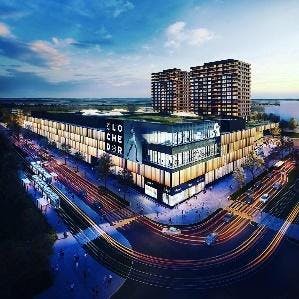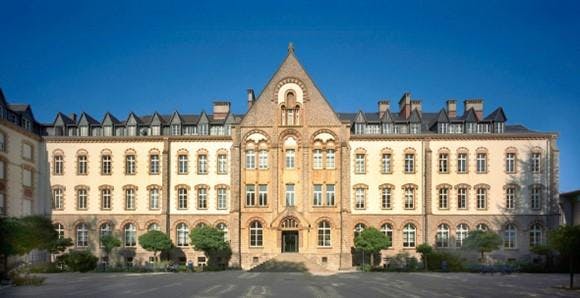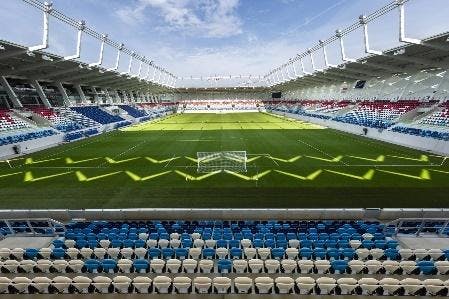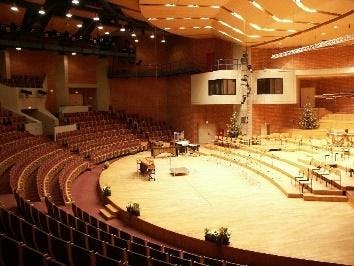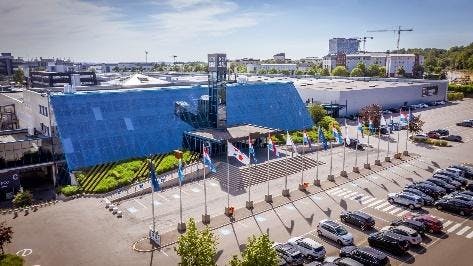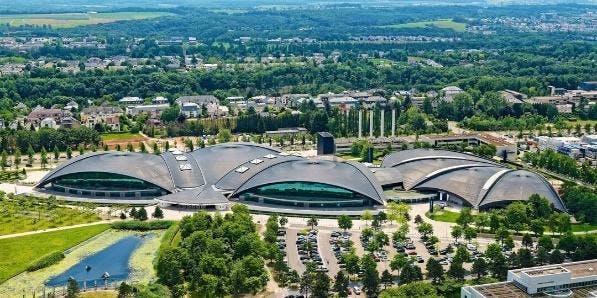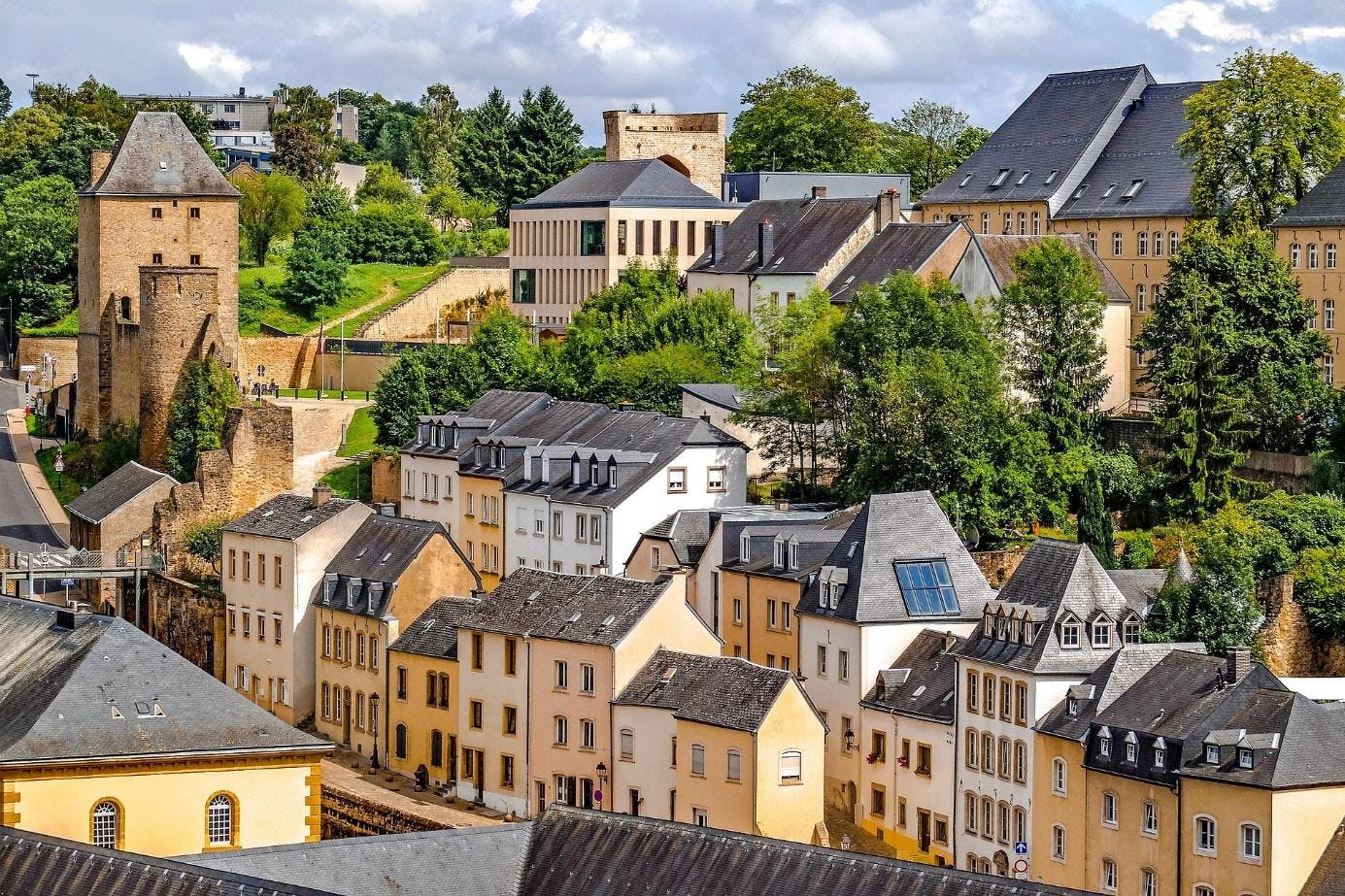
Luxembourg City: living in the heart of Luxembourg
Tucked away in the Grand Duchy of Luxembourg, you'll find Luxembourg City, which is not only the capital but also the largest city in the country. This article dives into the heart of Luxembourg's capital, giving you a closer look at its people and highlighting essential spots around town.
Luxembourg, at its heart, is a country nestled in Western Europe, surrounded by Belgium, France, and Germany. It's a small but prosperous land, famous for its beautiful scenery, wealthy economy, and significant role in European politics. Within this country lies a city also called Luxembourg, which is the capital and bustling center of the nation. To avoid confusion, people often call it Luxembourg City. It's known for its stunning medieval old town set on dramatic cliffs, its role as a central hub for the European Union, and its lively cultural atmosphere. In Luxembourg, "commune" refers to the smallest level of local government, similar to what many places would call a municipality. Luxembourg City itself is one such commune, handling local governance and services within its area. So, talking about Luxembourg could mean discussing the grandeur of the country, the historic and political significance of its capital city, or the local administrative setup that keeps the city running.
General characteristics of Luxembourg City
Luxembourg City, the capital of the Grand Duchy of Luxembourg and its largest city, boasts a population of 134,714 as of December 31, 2023. Nestled in the southern part of Luxembourg within the eponymous canton, it's conveniently located just 20 minutes by car from the borders of Belgium and France and 30 minutes from Germany.
Small but mighty
With a population like this the capital may seem small compared to other European counterparts like Paris, Brussels, or Madrid. However, it boasts hundreds of noteworthy centers spanning education, commerce, business, culture, and more. It's a city of significant importance, as evidenced for example in its nomination as the European Capital of Culture twice, first in 1995 and later in 2007.
Comprising 24 districts, each with its own distinct characteristics, the city offers a rich tapestry of experiences. The central neighborhoods, such as Ville Haute and the Grund, brim with history and culture, as the country's capital was built upon the formidable foundations of a grand fortress; these districts are even recognized as UNESCO World Heritage Sites. Other neighborhoods, like Kirchberg and Gasperich, house significant commercial and business centers.
Population of the capital
As of January 1, 2024, Luxembourg City had a population of 134,714 residents, making it the most populous city in the country, representing approximately 20% of the nation's population.

The city's population is distributed across various neighborhoods, with the six most populous being Bonnevoie-sud, Belair, Gare, Limpertsberg, Gasperich, and Kirchberg, collectively accounting for around 50% of the capital's population. Conversely, the least populous neighborhoods include Pulvermuehl, Grund, and Clausen.
Luxembourg City is notably cosmopolitan, boasting a high percentage of foreign residents at 70.44%. The neighborhood with the highest proportion of foreign residents is Gare, with an impressive 82.68%, followed by Neudorf/Weimershof and Kirchberg. In contrast, the neighborhood with the lowest proportion of foreign residents is Cents, with 49.31%, followed by Hamm and Grund.
Transport accessibility
In Luxembourg City, public transport is not only convenient but also free, offering residents and visitors easy access to various modes of transportation.
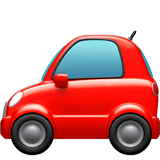




In terms of external connectivity, Luxembourg City is strategically positioned within the Frankfurt - Paris - Amsterdam triangle, ensuring connectivity to the European road network via several international routes for cars:
- A1 (E44): Towards Grevenmacher and Trier (Germany)
- A3 (E25): Towards Dudelange and Thionville/Metz (France)
- A4: Towards Esch-sur-Alzette and Audun-le-Tiche in France
- A6 (E25 / E411): Towards Arlon and Brussels
- A7 and N7 (E421): Towards Mersch, Ettelbruck, and Saint-Vith in Belgium
You can check in detail all the bus routes in the interactive map provided by the city of Luxembourg and get detailed instructions to get from one point to another on their route planner page.
Renting and buying real estate
Living in capital cities often comes with the advantage of urban amenities, but it also entails higher real estate costs, a trend mirrored in Luxembourg.

Luxembourg City, being the capital, exhibits significantly higher property prices compared to the rest of the country, particularly in its affluent neighborhoods where prices can be staggering.
In Luxembourg City, the average cost to buy a place is around 12,089 euros per square meter, while renting costs about 30.72 euros per square meter on average. If you're looking to buy, square meter on average. If you're looking to buy, Belair is the priciest area, where prices soar to 14,277 euros per square meter. Kirchberg and Limpertsberg are also on the higher end. Dommeldange offers more wallet-friendly options for buyers, with average prices at 9,277 euros per square meter. For renters, Pfaffenthal leads the pack with costs at 34.75 euros per square meter, with Kirchberg and Gasperich not far behind. If you're looking to save on rent, Cents is the most budget-friendly neighborhood, averaging 27.06 euros per square meter, with Beggen and Bonnevoie-Sud also offering lower rental prices.
For buying the usual prices stand at
For renting the average prices are around
Applications, search, and profound advice in our guide to renting
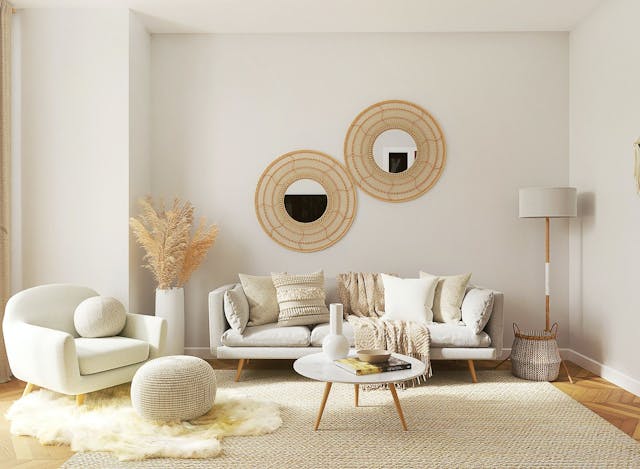
Infrastructure of Luxembourg City for life
The city is well-equipped with a comprehensive transport system that includes buses, trams, and a network of roads that keep everything connected. Cultural gems such as the Luxembourg Conservatory and Philharmonie Luxembourg bring vibrant cultural experiences to life. Health and well-being are top priorities, with leading facilities like the Center Hospitalier de Luxembourg and Hôpitaux Robert Schuman providing top-notch care.
For those who love the outdoors and shopping, places like the expansive Kinnekswiss Park and the bustling Cloche d’Or Shopping Center offer plenty of options to suit a variety of interests.
Place to call home
If you're considering making Luxembourg your new home, we encourage you to explore our range of articles that look in depth at the different city communes and neighborhoods.
Pros and cons of living in Luxembourg City
Living in the capital city offers a lifestyle vastly different from that of rural or suburban areas. Here are some of the advantages and disadvantages.
Living in Luxembourg City offers a blend of benefits and challenges that mirror the vibrant and complex nature of city life. On the bright side, the capital is a hub of connectivity and top-notch infrastructure, ensuring that getting around and staying connected is a breeze. The city's lively social atmosphere means there's always an opportunity to meet diverse groups of people. Whether it's healthcare, education, or entertainment, access to a wide range of services and amenities is second to none. Plus, the job market is thriving, offering varied career options across numerous industries.
Yet, urban living comes with its own set of hurdles. The competition for housing in Luxembourg City is fierce, leading to steep prices for both buying and renting. The hustle and bustle of the city may increase stress for some, a stark contrast to the tranquility found in more rural areas. For drivers, navigating daily commutes can be frustrating due to parking woes and traffic jams. And while the city does have its green spots, they might not fully satisfy those seeking deep immersion in nature.
What can you find in the capital?
Covering every aspect of Luxembourg City's rich infrastructure and landmark sites in one article is a big challenge, but let's uncover some of the capital's most remarkable features.
Luxembourg City offers a wide variety of schools and educational programs for everyone, from the youngest kids in childcare all the way up to university students. Whether you're starting school or continuing your education, the city has something for everyone.
Childcare and nurseries (creches) in Luxembourg CIty
In each neighborhood, public childcare centers offer services for young children. These centers are also available complemented by numerous private nurseries throughout the city. Well-known nursery chains like Rockids, Barbara, and Kidscare provide additional options for parents seeking childcare solutions.
Primary education for kids
Luxembourg City ensures accessibility to primary education with each neighborhood hosting its own public primary school. Additionally, several private primary schools are dispersed across the city, offering alternative educational pathways for families.
Secondary education in Luxembourg City
The city is home to many secondary schools, spread out across different areas. While some places might have just one secondary school, neighborhoods like Limpertsberg and Hollerich are known for having a lot of these schools.
Notable secondary schools in Limpertsberg include Lycée Michel Lucius Luxembourg, Lycée Technique du Centre, Lycée de Garçons de Luxembourg, Lycée des Arts et Métiers, and Lycée Robert-Schuman Luxembourg, among others. Hollerich, for example, is home to the esteemed Campus Geesseknäppchen, a vast campus shared by several academic and sports institutions, including Athénée de Luxembourg, Lycée Aline Mayrisch, and Lycée Michel Rodange.
Michel Lucius High School
Technical College Du Centre
Lycée de garçons Luxembourg
Lycée des Arts et Métiers
Robert-Schuman Lycee
Athénée de Luxembourg
Lycée Aline Mayrisch
Lycée Michel Rodange
Higher education
The University of Luxembourg, the country's primary public university, maintains campuses in Limpertsberg and Kirchberg within the capital. Established on August 12, 2003, the university boasts a diverse student body of approximately 6,800 students representing over 130 countries. With a faculty comprising 283 professors, assistant professors, and lecturers from 20 different countries, the university offers a wide array of academic programs, including 11 bachelor's and 23 master's degrees distributed across three faculties and three campuses.
The Limpertsberg campus hosts the Faculty of Law, Economics, and Finance, the Faculty of Science, Technology, and Medicine, and the Department of Physics and Materials Science, while the Kirchberg campus is home to the Faculty of Science, Technology, and Communication.
Additionally, private universities like the Luxembourg School of Business and the European Institute of Public Administration contribute to the city's higher education landscape.
University of Luxembourg
Luxembourg School of Business
European Institute of Public Administration
Luxembourg City, the capital of the Grand Duchy, boasts a vibrant cultural scene, having been selected as the European Capital of Culture twice, first in 1995 and later in 2007. Below are some of the city's most prominent cultural centers.
National Museum of Natural History of Luxembourg (Grund)
Luxembourg Conservatory (Hollerich)
Luxexpo The Box (Kirchberg)
Philharmonie Luxembourg (Kirchberg)
National Library (Kirchberg)
Théâtre National du Luxembourg (Merl)
Rotondes Cultural Center (Bonnevoie Nord / Verlorenkost)
Théâtre Ouvert Luxembourg (Bonnevoie Sud)
Kasemattentheater (Bonnevoie Sud)
Banannefabrik (Bonnevoie Sud)
Grand Théâtre de Luxembourg (Ville Haute)
Learn more about Luxembourg's culture and traditions in our special guide.
In Luxembourg, the primary healthcare centers include the Center Hospitalier de Luxembourg (CHL) and the Hôpitaux Robert Schuman group.
Center Hospitalier de Luxembourg (CHL)
Hôpitaux Robert Schuman
You can read more about urgent healthcare in our dedicated article: Emergency medical help in Luxembourg: ambulance and hospitals.
Luxembourg City boasts a lush green landscape, adorned with numerous parks, nature spots, and playgrounds catering to residents of all ages. These recreational areas offer a respite from urban life and provide ample opportunities for relaxation and outdoor activities. There are countless playgrounds in the capital city, all of them listed on the Spillplaz website.
- Kockelscheuer forest: Address: Kockelscheuer, Luxembourg
- Park Ban de Gasperich: Address: 27 Rue Richard Wagner, Gasperich Luxembourg
- Merl Parc: Address: 28a Rue de Bragance, Luxembourg
- Kinnekswiss Park: Address: 29 Av. de la Porte-Neuve, Ville-Haute Luxembourg
Luxembourg City boasts a vast array of sports infrastructure, offering residents and visitors ample opportunities for athletic pursuits. From multisport halls to tennis courts and football pitches, the city provides a diverse range of facilities to cater to various sporting interests. With approximately 18 multisport halls, 22 tennis courts, and 22 football fields scattered throughout the city, individuals can easily access these venues for recreational activities or organized events, with locations conveniently listed on the dedicated website of the City of Luxembourg.
National Institute of Sports (INS)
Sports Fields Boy Konen
Kockelscheuer Ice Rink
Luxembourg Stadium
Sports centre d'Coque
Luxembourg City offers an abundant array of supermarkets, restaurants, and shops catering to diverse preferences. While detailing each establishment would require numerous articles, for a comprehensive overview of the city's commercial offerings, we recommend exploring our dedicated articles on food and restaurants in Luxembourg and stores and marketplaces in Luxembourg. However, we'll highlight two significant locations: the Cloche d’Or Shopping Center, Luxembourg's largest mall, and Les Rives de Clausen, a bustling nightlife hub.
Cloche d’Or Shopping Center
Les Rives de Clausen
Historical overview
The foundation for Luxembourg City's development was laid in the 10th century, with the construction of a castle on the Bock rock by Count Sigefroy de Luxembourg (Siegfried). This castle was erected upon the remains of a Roman castellum called Lucilinburhuc, meaning "small castle" in Old High German.
Antiquity
Middle ages
Spanish period
French and Austrian influence
Dutch and Belgian periods
Luxembourg declared its neutrality in 1867 and saw occupation during both World Wars. Today, as a founding member of the European Union, Luxembourg City hosts numerous EU institutions and is recognized as one of the Union's capitals. With its rich history, strategic location, and high quality of life, Luxembourg City continues to thrive as a dynamic European hub.
Frequently Asked Questions (FAQ)
What healthcare facilities are available in Luxembourg City?
Luxembourg City boasts several healthcare facilities, including the Center Hospitalier de Luxembourg (CHL) and the Hôpitaux Robert Schuman group. The CHL, located in Rollingergrund and Belair Nord, offers a wide range of medical services and specialties, ensuring residents have access to top-notch healthcare. Meanwhile, the Hôpitaux Robert Schuman group operates hospitals such as Kirchberg Hospital, Clinique Bohler, and ZithaKlinik, providing high-quality medical care with a focus on personalized service.
How is the housing market in Luxembourg City?
The housing market in Luxembourg City is characterized by high demand and relatively high prices compared to the rest of the country. Prices for both buying and renting properties tend to be higher in the capital, with neighborhoods like Belair and Kirchberg commanding premium prices. However, there is a diverse range of housing options available, from modern apartments to traditional townhouses, catering to various preferences and budgets.
How do I navigate the public transportation system in Luxembourg City?
Luxembourg City offers an efficient and accessible public transportation system comprising buses, trams, and trains. The city has an extensive network of bus routes operated by AVL (Autobus de la Ville de Luxembourg) and RGTR (Régime Général des Transports Routiers), connecting different neighborhoods and surrounding areas. Additionally, the tram system provides convenient transportation along key routes. Travelers can use the Mobiliteit app or visit the public transport website to plan their journeys and access real-time information on schedules and routes.
Source: fr.wikipedia.org, www.visitluxembourg.com, lustat.statec.lu, www.vdl.lu, www.vdl.lu, www.vdl.lu, www.immotop.lu, lml.lu, ltc.lu, lgl.lu, artsetmetiers.lu, lrsl.lu, al.lu, laml.lu, lmrl.lu, uni.lu, luxsb.lu, eipa.eu, rotondes.lu, tol.lu, kasemattentheater.lu, banannefabrik.lu, mnhn.lu, conservatoire.lu, thebox.lu, philharmonie.lu, bnl.lu, lestheatres.lu, tnl.lu, chl.lu, hopitauxschuman.lu, ins.lu, vdl.lu, hockey.lu, kockelscheuer.com, stadedeluxembourg.lu, coque.lu, cdo.lu
We took photos from these sources: Pixabay, University of Luxembourg, Faculty of Law, Economics and Finance Facebook Page, Conservatoire de Luxembourg Facebook Page, Luxexpo Facebook page, Cloche d'Or Experience Facebook Page, d’Coque website, Luxembourg Stadium website
